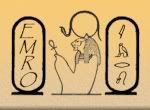La Source
by Pierre-Paul Prud'hon
c. 1801
Black and white chalk approx. 21 x 15
by Pierre-Paul Prud'hon
c. 1801
Black and white chalk approx. 21 x 15
 Click on picture for larger image.
Click on picture for larger image.Who knew one could capture so much with black and white chalk on blue-gray paper? Neoclassical artist, Pierre-Paul Prud'hon is a master of chiaroscuro. The more important thing to note about Prud'hon is that he is also a master of "touch." In other words, his hand has an sensitive empathy with the actual texture of the subject so that he can duplicate said texture with a high degree of realism. There are parts of this drawing on the outer edge that fade off into gesture, but the figure herself is positively alive with illusionistic tactility. The light and dark of the chiaroscuro shape her figure accurately, but it is the artist's touch that communicates her flesh. From the tension of her hand touching her face, to the natural roundness of her breasts, to the bending and folding of her belly, the viewer gets the clear picture of female flesh (as distinct from male). It is this delicacy and sensitivity that makes Prud'hon a master draftsman.
Drawing is often relegated to a secondary or minor art form. If you go to a museum, you will see rooms of paintings, but rarely rooms of drawings (unless it is a "special" exhibition). Even less common is seeing drawings NEXT to paintings in a museum (unless a drawing is a study for the finished painting next to it). Perhaps it is because drawing is often in black and white and people prefer color, that it has been condemned to be the "wallflower" of all the two-dimensional art forms. It is more often that colored pieces win the prizes in art competitions (unless it is a drawing competition, specifically). I remember being warned when applying to grad schools to put paintings and not just drawings in my portfolio because reviewers would like to see what I could do with color. I was also advised not to major in drawing because it "led nowhere professionally."
Sadly, my little wallflower is my favorite two-dimensional art form precisely because it is so primary and necessary for improving observational skills. I like black and white drawing because sometimes color obscures the facts about form and light. In fact, one definition of "color" is to "reveal BY covering," thereby making color a deception and a paradox. There is truth and simplicity in black and white. I guess what I love about this image is it reminds me that drawing is, in fact, an art unto itself that deserves recognition as such. It isn't merely something you use as a study for another art form, but it exists for its own sake as an object of beauty to behold and contemplate.
* La Source can be found in the permanent collection at the Sterling and Francine Clark Art Institute in Williamstown, MA.
© Stephanie Lewis, 2007





1 comment:
It is too simple to say I agree with this commentary because I feel it more than agree with it. I like how it puts in words, though, that feeling I have had when I see the intimidating paintings of grand objects or landscapes and am denied the "simple" drawings of an artist. I put simple in quotes because I cannot draw a stick figure and instead use words to draw as I am a writer of fiction. The Rubenesque woman featured in this commentary makes me wish for a time past where stick figures with poofy lips, to quote Enda from the Incredibles, were the dominant image of eros. I think women with flesh are far more interesting and drawings of them far more beautiful than any photo of any supermodel and the fact that our society today has absorbed the supermodel as an icon of femininity is not just damaging to all women but a falsehood. I will end my rant with an amen to the robust and well drawn woman. Let there be more of her.
Post a Comment